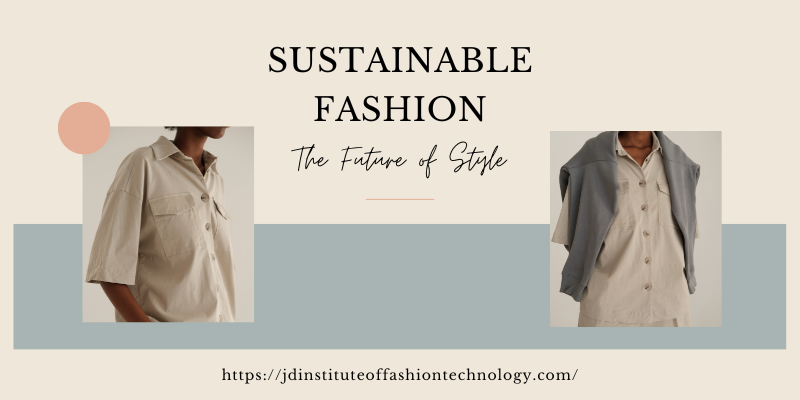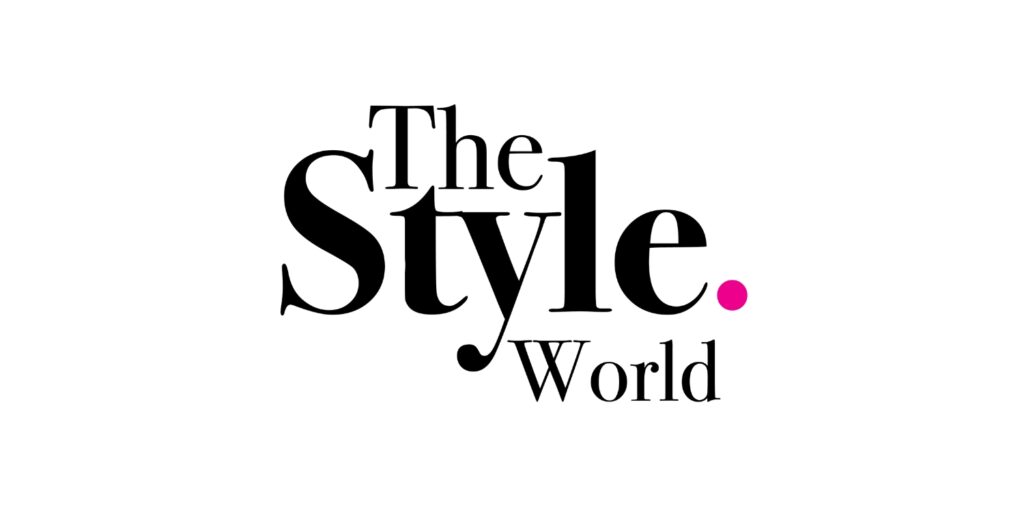Sustainable Fashion: The Future of Style
Jd Institute
- March 2, 2023
- 7 min read
- Blogs

"Consumers can change the world with just a few wise purchases."
Introduction : Sustainable Fashion
It is no secret that fashion mirrors society, and as such, has embraced the global environmental concern to shift towards sustainable fashion – the future of style.
Rather than their daily commute or cross-country flights, many consumers’ wardrobes are the biggest contributor to their environmental footprint. Climate change and biodiversity loss are major problems associated with the fashion industry. This is why sustainable fashion is the future of style, and its efforts are essential to the health of our planet.
Is Sustainable Fashion the future of style ?
The concept of sustainable fashion transcends beyond using natural elements during manufacturing to include procedures such as innovation, increasing efficiency, and giving back to the community. In different and original ways, different brands apply a broader set of rules in order to survive the current industry and future of fashion.
Why is Sustainable Fashion needed?
The fashion industry experienced a major shift in global relocation just a few years ago. This was the birth of what was called “fast fashion”, which is the process of creating a series of garments at a low cost over a long period of time.
It is now time for sustainable fashion to win the game in the current era. There is actually a need for what some call a temporary trend or a marketing campaign by companies to gain followers. Not only is sustainable fashion beneficial to society as a whole, since the future of the planet relies on maintaining ecosystems, but it is also beneficial to large corporations and fashion companies because it reduces costs and prolongs longevity.
In some cases, brands are born to serve as benchmarks. Edun, a firm dedicated to sustainable fashion, was founded in 2005 and entered the LVMH conglomerate in 2009, whose parent company includes Louis Vuitton, Dior, Kenzo, and Fendi. Among international brands, there is Eileen Fisher or The Reformation, and in Spain there are El Naturalista, Zara and Skunkfunk.
Popular Sustainable Fashion Brands
The following firms have placed their bets on sustainable fashion.
1. Eileen Fisher
In the field of eco fashion, Eileen Fisher is regarded as one of the most influential brands in America. Shirts are made with sustainable materials and a system is in place to collect used clothing to make new ones. A further sign of revaluing craftsmanship is that the brand is working with artisans from India and Ethiopia.
2. Kering
Kering includes Gucci, Stella McCartney, Yves Saint Laurent, Balenciaga, and Puma.
Carbon emissions, water pollution, cotton production, and livestock production are the main areas of focus, which is the second biggest polluter in the world.
In order to create sustainable fashion, all brands adhere to this business philosophy. Gucci handbags, such as the bestseller Dionysus, use polyurethane instead of PVC in their details. This results in a significant reduction in environmental impact without compromising aesthetics.
3. Adidas
An environmentally conscious sports company. Real Madrid and Bayern Munich shirts are being produced by Adidas as a result of their second collaboration with Parley for the Oceans, a platform focused on reducing the earth’s ecological footprint.
During the organisation’s clean-up of the Maldives seabed, it collects used plastic, which is used to make the sustainable fibre used in the kits. The Ultra Boost sneaker was created with the same type of fibre in their first collaboration.
4. Levi’s
In the past few years, the company has stood out for its commitment to saving water. Since Levi’s is aware of the risks associated with dying and washing denim garments, the company strives to minimise the use of water in the process. Water Less is Levi’s campaign that began in 2011 and has saved about 200 million litres of water since then. The finishing of a rigid jeans water-less 501 consumes less than one litre of water compared to a normal jeans. By making its techniques public, the company has undoubtedly taken a big step.
5. Inditex
Slowly, low cost has become a part of sustainable fashion. As a company, Inditex hasn’t been the first to implement sustainability initiatives, but its flagship Zara brand has made substantial strides in recent months.
Its stores and H&M are all eco-friendly. As one of the largest buyers of organic cotton and users of recycled polyester in the world, H&M is a significant user of organic cotton.
Popular Sustainable Fashion accounts on Instagram
A sustainable lifestyle is neither pricey nor stylish. A new, more responsible fashion model is needed to respond to the new values of a society that demands and demands an appropriate model for the future of fashion and style.
You can use these few Instagram accounts to be inspired to continue advocating for an ethical, sustainable fashion industry.
Fashion Revolution with 532k followers -
Fashion Round Table with 11k followers -
Global Garbs with 15k followers -
WFTO Fair Trade with 46.8k followers -
Birdsong London with 40k followers -
The Sustainable Angle with 28k followers -
The Sustainable Fashion Forum with 215k followers -
Sustainable Fashion Choices
Among consumers, young buyers represent a key demographic who understand fashion’s social impact. A growing number of individuals are consciously buying fewer new clothes and turning to “thrifting” as a more sustainable alternative.
This puts the fashion industry in a difficult position of remaining relevant to consumers in the future when they demand the latest styles while reducing environmental and social impacts. Some viable options are listed below.
1. Alternative Materials Investing
It is the materials that contribute most to the fashion industry’s environmental footprint. The majority of clothing is made of synthetic petroleum-based fabrics. Over a period all microplastics enter the ocean, soil, rivers, and lakes when synthetic textiles are washed.
It is for this reason that fashion brands and materials science companies are exploring alternatives, such as biodegradable polyester, and even making products from captured carbon, such as eyeglasses.
2. Reselling
Companies can refurbish and resell their own products with the help of sustainable materials and circular business models. Several large retailers are promoting second-hand sales and encouraging customers to return their old clothing. It is increasingly common for luxury brands to refurbish and resell selected items.
3. Recycling
It is often not feasible to resell or refurbish apparel, even though it is the most sustainable option. Recycling plays a crucial role in a sustainable strategy.
There have been several apparel companies that have committed to bringing 100% recycled or sustainably sourced materials to the market in the next decade, including some that popularised “fast fashion.”
Conclusion
A major fashion retailer is increasingly realising that sustainable fashion should be integrated into the core operations and corporate culture of the company rather than being isolated to a single product line.
It will also be necessary to examine how the fashion and apparel business operates, including everything from energy use and hiring practices to marketing and governance. This will be necessary if meaningful change and sustainable fashion are to be achieved.
Read ‘How To Recycle Old Clothes’ https://jdinstituteoffashiontechnology.com/how-to-recycle-old-clothes/to make sustainable fashion a part of your everyday life.






